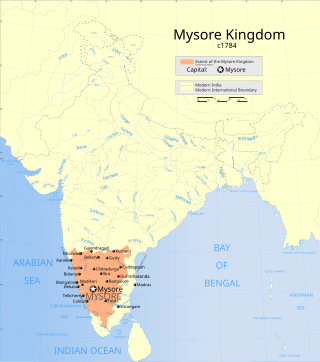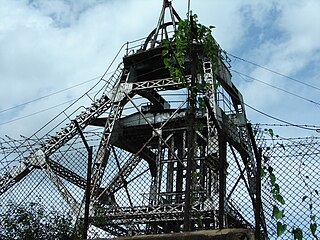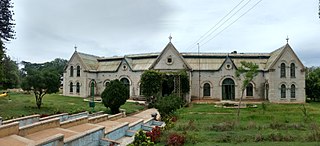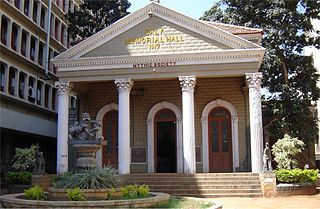
Whitefield is a suburb of Bangalore in the state of Karnataka, India. Established in 1882 as a settlement for the Eurasians and Anglo Indians of Bangalore, Whitefield remained a quaint little settlement at the eastern periphery of Bangalore city till the late 1990s when the local IT boom turned it into a major suburb. It is now a major part of Greater Bangalore. Whitefield is Bengaluru's first tech corridor to be connected by Namma Metro.

Kolar district is a district in the state of Karnataka, India.

The Wadiyar dynasty,(Kannada:[ oɖejɐru]) also referred to as the Wadiyars of Mysore, is a late-medieval Indian royal family of former maharajas of Mysore from the Urs clan originally based in Mysore city.

The Kingdom of Mysore was a geopolitical realm in southern India founded in around 1399 in the vicinity of the modern-day city of Mysore and prevailed until 1950. The territorial boundaries and the form of government transmuted substantially throughout the kingdom's lifetime. While originally a feudal vassal under the Vijayanagara Empire, it became a princely state in British Raj from 1799 to 1947, marked in-between by major political changes.

Kolar Gold Fields (K.G.F.) is a mining region in K.G.F. taluk (township), Kolar district, Karnataka, India. It is headquartered in Robertsonpet, where employees of Bharat Gold Mines Limited (BGML) and BEML Limited and their families live. K.G.F. is about 30 kilometres (19 mi) from Kolar, 100 kilometres (62 mi) from Bengaluru, capital of Karnataka. Over a century, the town has been known for gold mining. The mine closed on 28 February 2001 due to a fall in gold prices, despite gold still being present there. One of India's first power-generation units was built in 1889 to support mining operations. The mine complex hosted some particle physics experiments between the 1960s and 1992.
Andersonpet is a township of Kolar Gold Fields, located in the Kolar district on Karnataka, India. It is situated in Kolar District of Karnataka state and having pin code of 563113.

Bethamangala is a small town in the Kolar Gold Field taluk of Kolar district in the state of Karnataka, India. The town is centred around a large man-made lake created by damming the Palar river. The lake supplies drinking water to the nearby mining city of Kolar Gold Fields ("KGF"). The Bethamangala water works was established in 1903-04 and is a popular tourist site.
King George Hall is the town hall of the city of Kolar Gold Fields in India. It is situated in the centre of Robertsonpet and was built in honour of the then emperor of India, King George. It is built in the Victorian style with a lawn and garden in front of it.

The Daly Memorial Hall, is a heritage building located in Bangalore, Karnataka that houses the Mythic Society. The Mythic society, founded in 1909, is a pioneering institution of Catholic-Indic studies in South India. Daly Memorial Hall, built at a cost of INR 24,783, was inaugurated on 25 July 1917 by the Kanteerava Narasimharaja Wadiyar (the Yuvaraja of Mysore. The Hall is named after Sir Hugh Daly, who served as the Resident of Mysore State and Chief Commissioner of Coorg.

Kolar or Kolāra is a city in the Indian state of Karnataka. It is the headquarters of Kolar district. The city is known for its milk production and gold mines. It is also known for the Someshwara and Kolaramma temples.
KGF School is a combined primary school and high school campus in Kolar Gold Fields, India. It was founded by the John Taylor and Sons Company in 1899 or 1900 to educate the children of European gold mine staff. Initially, only European children were admitted. Eventually, admission was opened up to some Anglo-Indian and even later Indian children, but they were segregated from the European children.
M. A. Sreenivasan (1897–1998) was a minister in the Princely State of Mysore and was also Dewan of Gwalior.
Our Lady of Victories Church is a Catholic church situated in the Kolar Gold Fields within the Kolar district, in the State of Karnataka in India. This was the first parish church that was established in the Kolar District (1884–1932) and heads the other parishes under its Diocese. Originally, the church consisted of 16,000 Catholics, which included 9,000 Tamil followers and 1,000 British and Italian followers. There were also 5,000 parishioners that belonged to other parishes in the congregation.
The Karnataka Central Diocese is one of the twenty-two dioceses of the Church of South India covering the central part of Karnataka. The Church of South India is a United Protestant denomination.
Lavelle Road is an upmarket residential and commercial street in the city of Bangalore, Karnataka in India. It is an important connection between Mahatma Gandhi Square and Richmond Circle. The road starts from the Queens Road end of the M. Chinnaswamy Stadium and after curving in a serpentine manner meets the junction of Bangalore Club with Richmond Circle. Lavelle Road was named after Michael F Lavelle, an Irish soldier who later made his money in the Kolar Gold Fields.

Coromandel is a mining area in Kolar Gold Fields(KGF), Karnataka, India. Where major mining units are located.
K.S. Vasan was an Indian communist politician and trade unionist from the Kolar Gold Fields. who organized the first leftist trade union in the gold fields during the 1940s. Vasan, then a young man, arrived at the Kolar Gold Fields from Madras and went on to build a union that mobilized labourers from thirteen different mining companies. He was arrested as he led a workers revolt against the British authorities.
Fraser Town, Bengaluru or Mootocherry, is a locality of Bangalore Cantonment, located in the central part of the city spread over 4 km2. It was established in 1906 and is named after Stuart Mitford Fraser (1864–1963), who was the tutor and guardian of Krishna Raja Wadiyar IV, Maharaja of Mysore. Fraser Town was established to de-congest the growing Bangalore Civil and Military Station. The foundation of Fraser Town was laid in August 1910 by Mrs. F J Richards, with a commemorative plaque on the corner of Coles Road and Mosque Road.

St. Michael's and All Angels' Church is located at Oorgaum, Kolar Gold Fields, India. The church stands on Cooke Road, near the KGF Club, south of the Catholic Mother of Mines Church. The origin of the church goes back to 1899, and was for the exclusive use of the (white) officers of the John Taylor and Sons, London, which owned the gold mines at Kolar Gold Fields (KGF), Mysore State.










